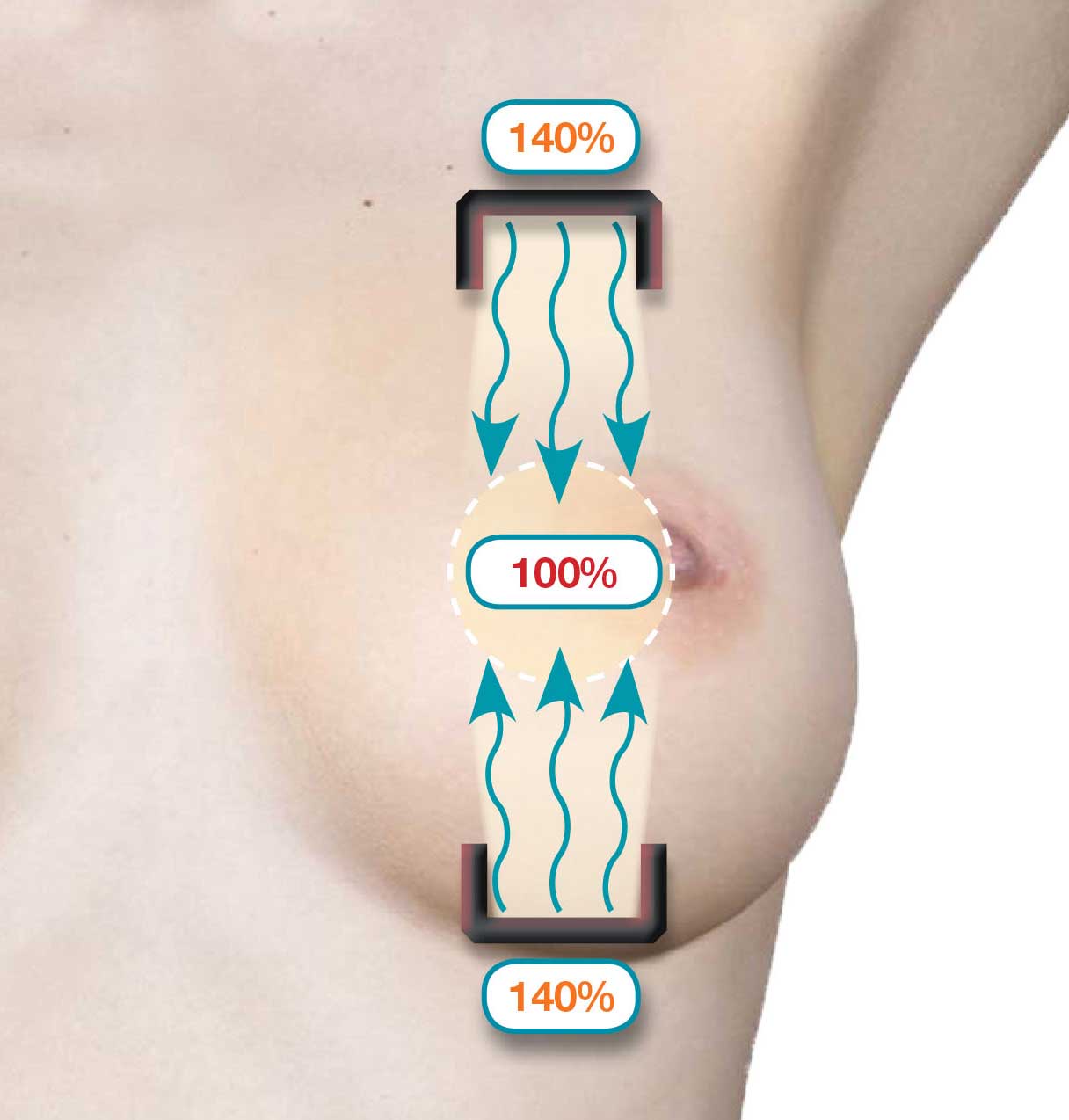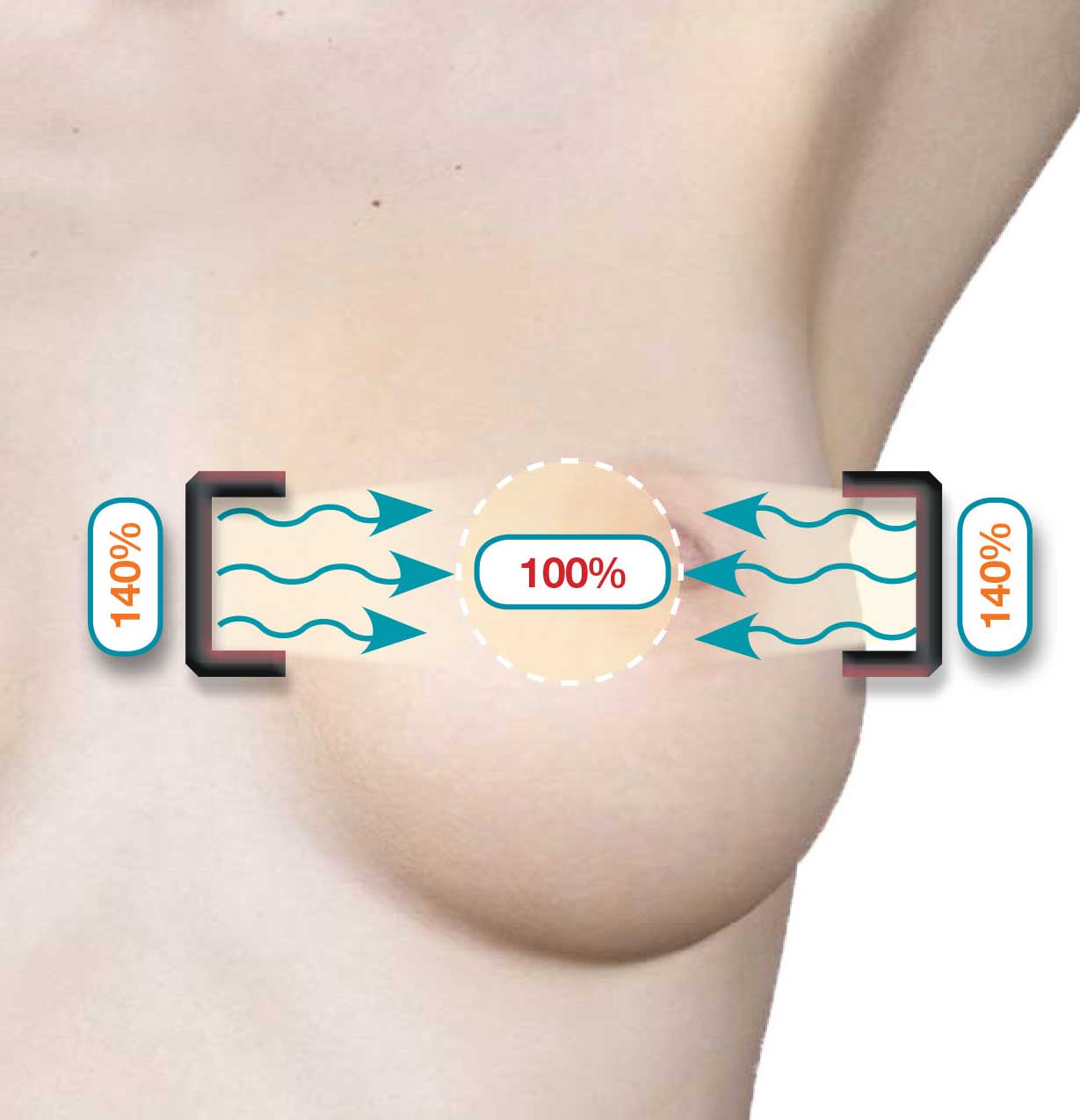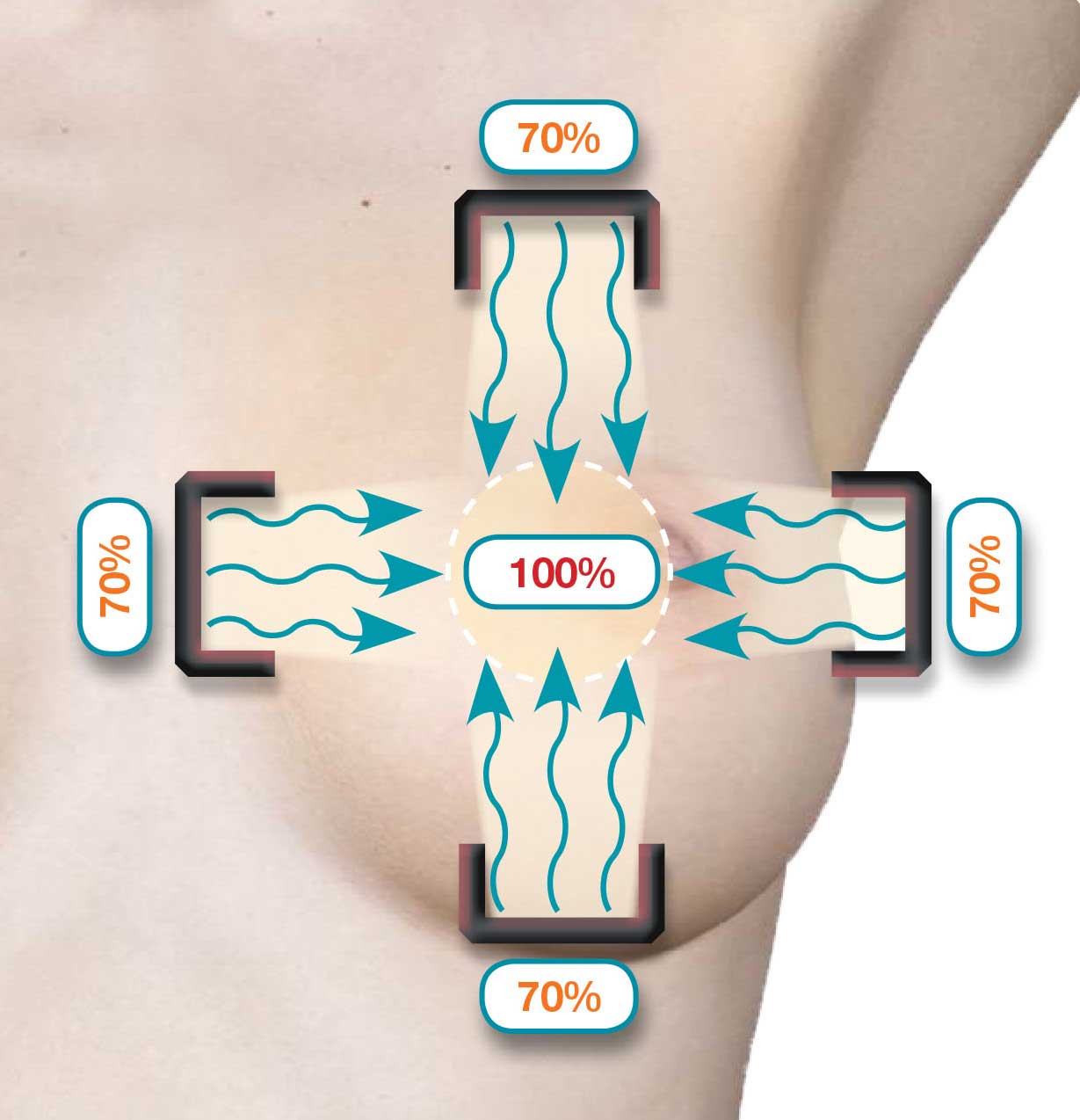How AccuBoost Works
How Does The AccuBoost Treatment Work?
The AccuBoost Technique is designed to target the radiation to the patient’s tumor bed while, at the same time, limiting the dose to surrounding healthy tissues. With this Technique, the radiation is delivered parallel to the chest wall, minimizing exposure to the heart and lungs and reducing the skin dose. In this approach, the radiation oncologist will use a mammography machine to immobilize the breast for imaging and treatment. The pressure applied is only a fraction of what is typical in mammography, but the immobilization is an enabling feature as it limits tissue movement during imaging and treatment (due to respiratory motion and other sources). The immobilized breast images aid the radiation oncologist in precisely targeting the radiation field. Ultimately, the doctor will use multiple intersecting “beams” of radiation that overlap in the tissue surrounding the lumpectomy cavity, the most likely site for recurrence.
The AccuBoost Treatment Process
The radiation dose delivered in this process is uniform, homogeneous and is accurately targeted to the breast tissue which, if left untreated, is the most likely site (place) for cancer recurrence.
There are two main options for breast radiation therapy associated with Breast Conserving Therapy (BCT). Which option is best for a patient is an important and personal discussion each patient must have with her radiation oncologist. The AccuBoost Technique is used for both approaches:
Whole Breast Irradiation (WBI) with Tumor bed boost dose – This is the “gold standard” treatment that has been around for decades. In this technique, there are two steps, Whole Breast Irradiation(WBI) and Boost. The WBI step, as the name would imply, delivers radiation to the entire breast. WBI is complemented with additional “Boost” radiation, delivering additional radiation to the tissues surrounding the original cancer site, the most likely location to see recurrence. AccuBoost delivers a conformal boost dose under precise image guidance.
Accelerated Partial Breast Irradiation (APBI) – This is a newer, but accepted technique, where the radiation dose is restricted to just the tissues around the site of the original disease. This APBI, as the name suggests, is typically completed in a shorter time namely 5-10 days.
See how the AccuBoost treatment process works below:
How AccuBoost Works: Step-By-Step
Step 1 – Vertical Treatment
The breast is slightly compressed in the mammography machine, first in a vertical direction [to hold the breast still while imaged and during the treatment]. An image is taken while the breast is immobilized, the radiation oncologist reviews the image and determines the size, shape, and location of the radiation field. The Applicators will then be positioned above and below the breast for delivery of radiation along the vertical (cranial-caudal) direction.

Step 2 – Horizontal Treatment

The process of Step 1 is repeated by immobilizing the breast in a horizontal direction. A new image is taken and the radiation oncologist again determines the size, shape, and location of the radiation field. The applicators are positioned on either side of the breast for delivery of radiation in the horizontal (medial-lateral) direction.
Step 3 – Combined Treatment
The shielded applicators direct the radiation where the doctor desires and minimize dose to tissues not being targeted. The applicators form, in essence, a beam of radiation. In the region within the breast that the radiation oncologist is targeting, the two beams from step 1 and 2 will “Overlap”, and it is this region of overlap that receives the full treatment dose while only minimal dose is received by non-target healthy tissues.
